Google Analytics 4 Implementation Guide - Step 3 - Tool Settings

In this series, we first discussed where to start GA4 implementation, then elaborated on having a goal in mind, the benefits of involving a broader team at the beginning of the project, and the importance of making a plan before starting data tracking.
In the second post, we summarized how to create a GA4 account, add it to your website through Google Tag Manager, and implement previously defined custom events.
I will work through the tool settings in this post and share my suggested configurations.
Why is this post important?
If you find setting up GA4 correctly and accurately much harder than Universal Analytics, you can benefit from these posts and find practical suggestions in this one. Some settings will help you learn about your audience demographics, while others will help you connect multiple Google products.
What can you accomplish by the end of this post?
You can update your account and property settings as we go. By the end of the post, you can understand these settings and select the ones you need to update and update them.
What to look for, and How can you update the settings?
Property Details
Here, you can give your property an appropriate name, select the industry your business is in, and find your time zone.
In Universal Analytics, there used to be a benchmark report to compare your website performances with those of others in the same industry and similar sizes. Although this report is unavailable in GA4, the Google team might return it.
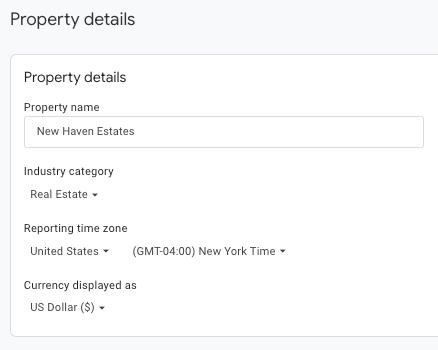
Account & Property Access Management
You might have added too many or too few individuals to your account property management list. Both can cause unwanted results. Too many Admins and editors can cause safety issues, while not having enough users or wrongly assigned admin roles can block you from accessing your data.
This week, I was brought in for a case in which a client couldn't find who the admin is for their GA4 account; therefore, they cannot access their data or add new users. This is a hairy problem. Of course, there are solutions, but it's not as easy as adding a new user to a property.
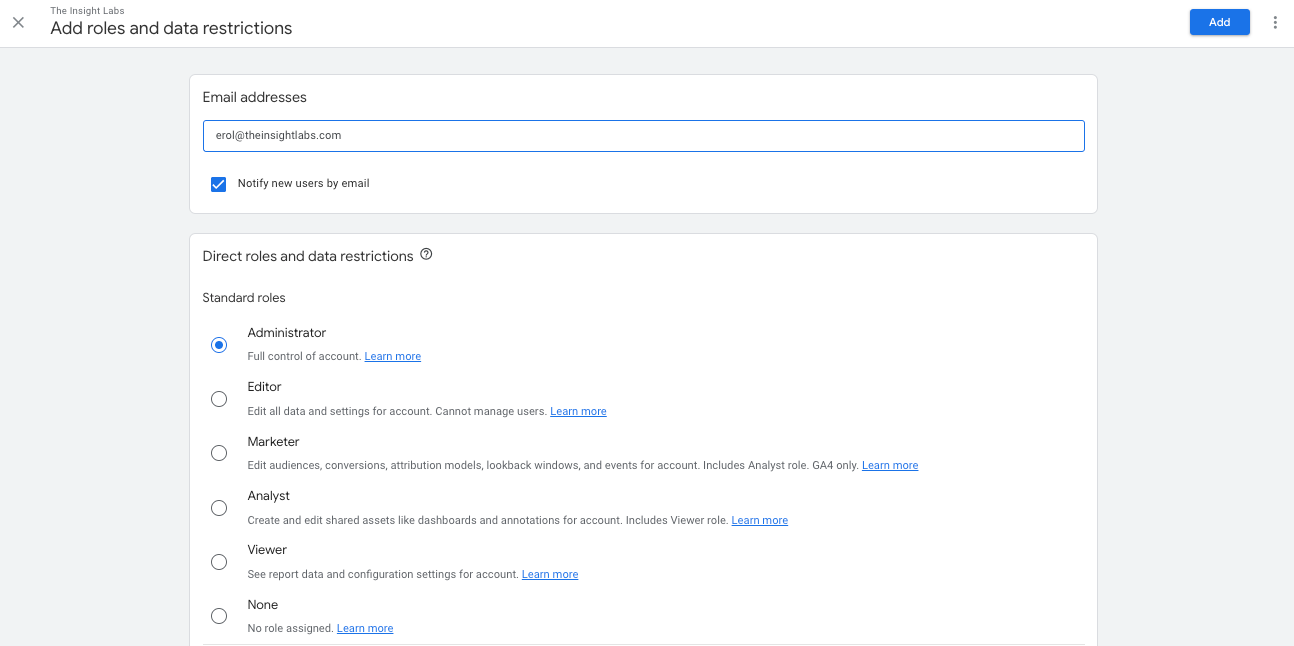
For those with this issue, I can prepare another post. Here is the link you can follow. To briefly explain, the steps are simply creating a text file and saving it as analytics.txt; following Google's suggested string of text in this file, which is;
*You can see that the text has "UA" indicating universal analytics. We are about to try this method for a GA4 account. In the future, I can update this post with the results.
the remaining steps are adding the suggested string to your top-level domain and then contacting Google to let them know you are having the issue and that you are the property owner.
Scheduled Emails
We frequently used this feature in Universal Analytics, but it was not available once GA4 was launched, yet it was introduced along the way, like many other features and metrics, such as Bounce Rate. I heard many objections against GA4 not having the reports the clients want to use. Here are two examples (Scheduled Emails & Bounce Rate). The Google team continuously improves the tool and enhances its usability.
Scheduled Emails help us share the reports with selected stakeholders without manually collecting the data from the tool. We can share the Overview Reports (Acquisition Overview) or a report (Traffic Acquisition) with or without filters. We can select the start date to send the reports, the frequency (daily, weekly, monthly, etc.), add a recipient list, the duration we wish to send the report for, and the format (PDF, CSV).
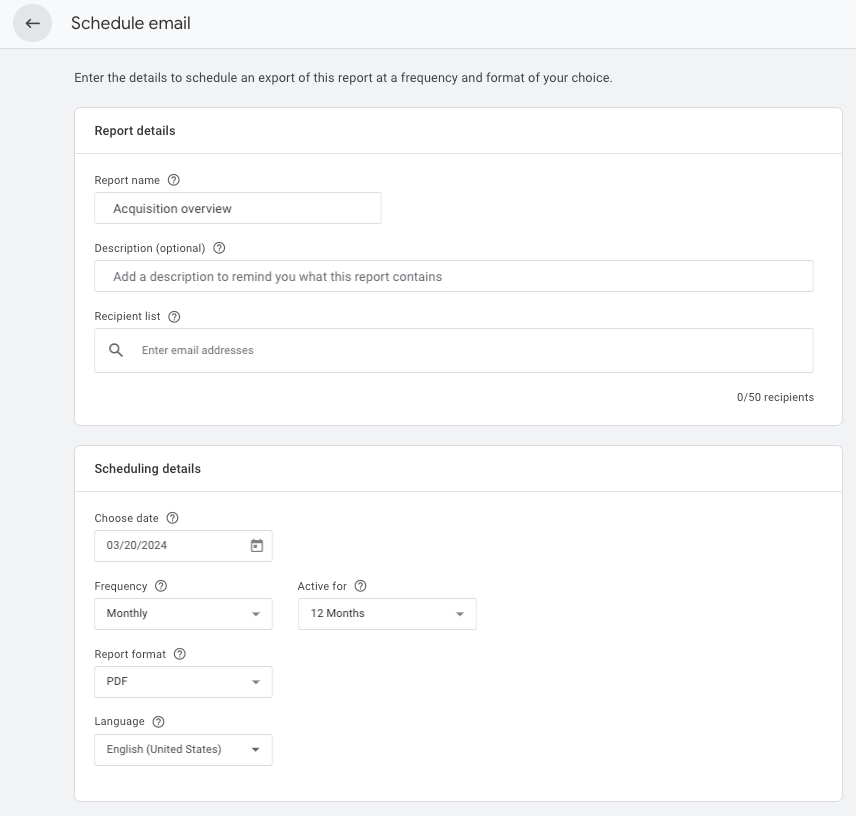
We can apply filters to the reports and share them with the filters.
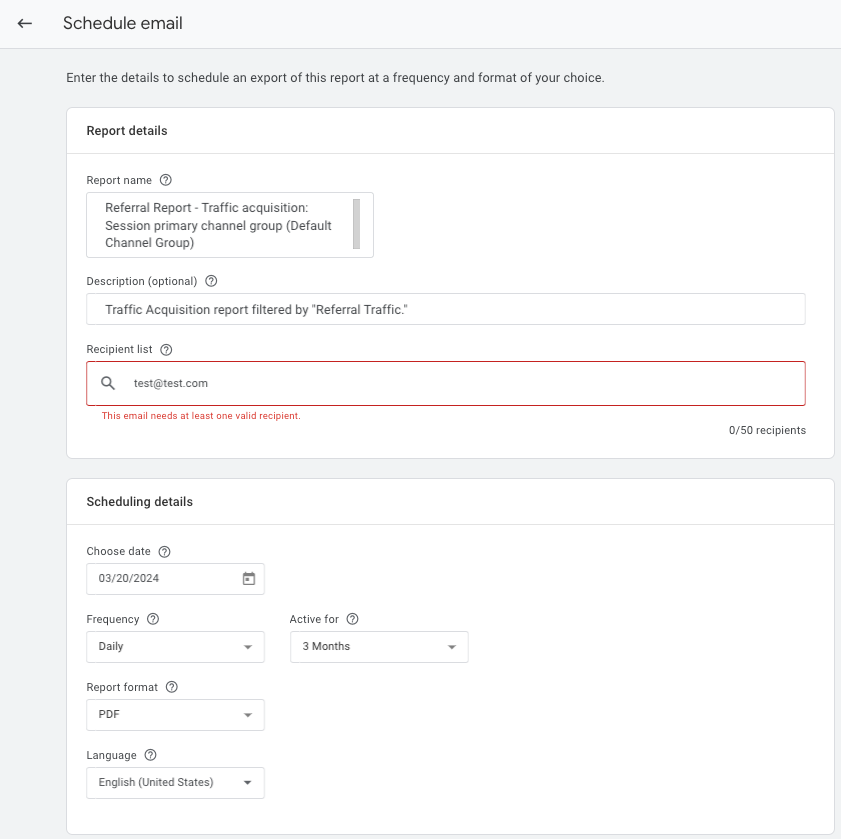
To manage the scheduled emails, head to Admin -> Property Settings -> Property -> Scheduled emails. Here, you can see the list of reports, their frequency, status, recipient number, and how long they will stay active.
Data Collection and Modification
You can find this section in Admin->Property Settings. The following modifications can be done here.
Data Stream
Google defines a data stream as a flow of data from a customer touchpoint to Analytics here. In most cases, GA4 properties use one type of data stream, the web, but up to three types of data streams (web, iOS, Android) can be used to feed the same GA4 property.
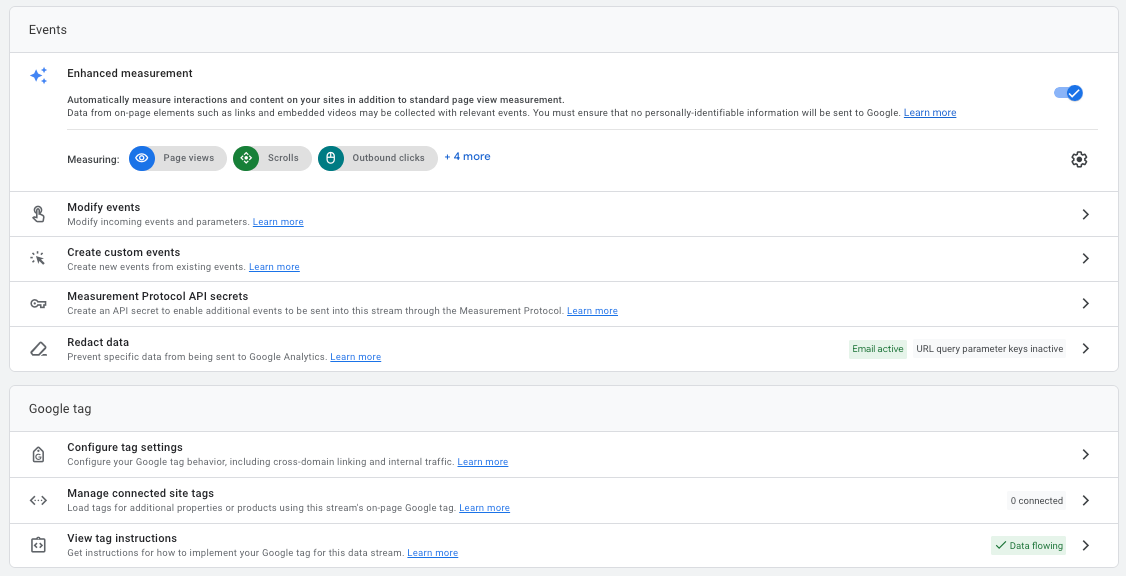
-
Enhanced measurement: In Step 2, we discussed automatically collected events and enhanced measurement. You can check it for details. Enhanced measurement is how Google helps us by collecting some of the event data.
-
Modify Events: As we all know, mistakes happen; once they do, it is nice to have a chance to clear things up. The Modify Events settings give us the ability to clear such issues. Here is a great post by Charles Farina explaining how he messed up the scroll tracking event and fixed it using the Modify Events feature.
-
Create custom events: This feature allows you to create a new custom event using existing events. For example, you may want to define a custom event for a specific pageview, like a thank_you page; using the existing "page_view" event and leveraging the matching condition parameters, you can prepare a new Custom Event within GA4 UI. This is a nice feature if you are not using GTM but want to build on top of Google's Enhanced Events Tracking capabilities.
-
Redact data: Privacy is important, and Google takes it extremely seriously. Google strictly prohibits the collection of Personally Identifiable Information (PII). Sometimes, by mistake, PII data can be sent to GA. To prevent such occasions, Google default prevents "Email" data from event data. They also allow us to redact certain URL parameters from being collected.

-
Configure Tag Settings
- Configure your domains: If you have multiple domains sending traffic to the same GA4 property, this is where you can manage them through cross-domain tracking and prevent "referral" traffic from your own domains.
- List Unwanted Referrals: There might be many reasons you need to exclude referrals from certain domains. A common one is listing payment providers' traffic in this setting because if not done, GA attributes the payment provider's website as the conversion source.
- Adjust Session Timeout: The session duration is set to 30 minutes by default. Yet, we know how we consume data on the internet. We might have multiple browsers open and many tabs on each. We can visit a website, read a bit, then move to another tab and return an hour later. If the session duration is set to 30 minutes, the visit we did one hour later can cause the landing page to appear as (not set) under Engagement->Landing Page report.
Data Collection
This section is very important if you wish to demographic information about your visitors and send audience demographical information about your visitors and send Audience data to Google Ads.
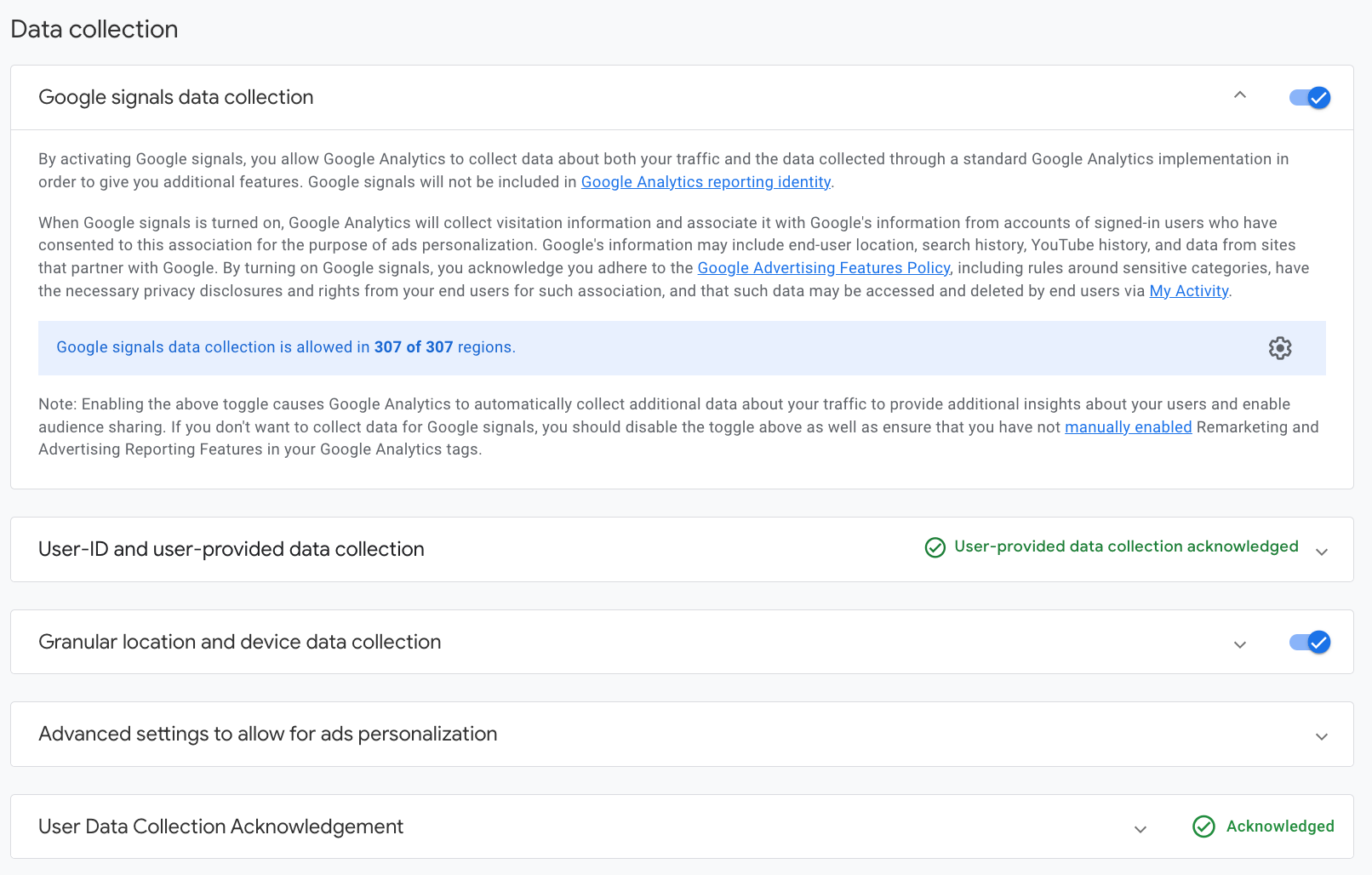
Data Retention
Here is another important topic that deserves its post. In the simplest terms, data retention is mostly related to "custom reports," the aggregated, already available reports show summary data, and they will continue summarizing your data regardless of the data retention period. Yet, if you wish to use "Custom Reports" once the reports are insufficient, data retention comes into play. For example, let's say you run a marketing agency. You collect lead-related custom events, and you want to track the conversion funnel steps, like Session Start->Lead Interest->Custom Form Submit->Schedule Set, and you want to see this funnel in a tabular format where the columns are the months and rows are the funnel steps; then, you need to use Custom Reports, and if your Data Retention is limited to two months, this can create some headaches for you.
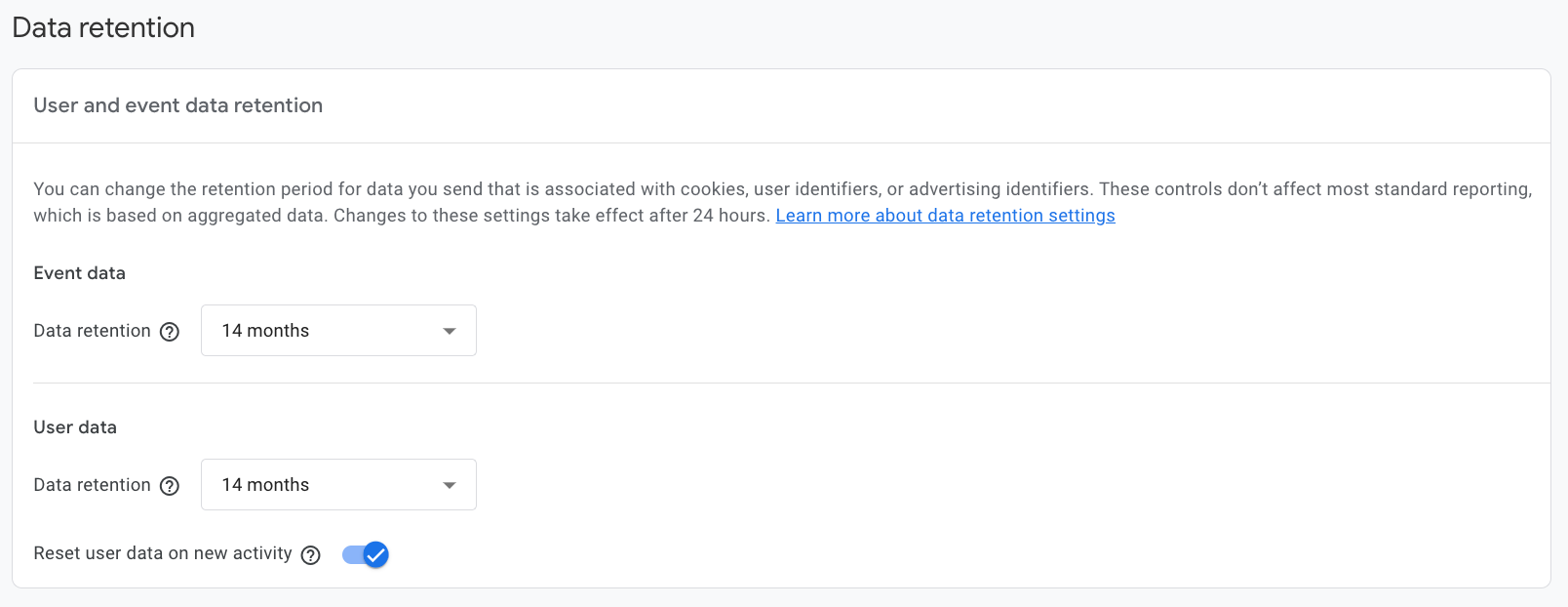
Data Filters
In Universal Analytics, applying data filters was much easier, and there were more options to filter data. Probably, in the future there will be more ways to apply filters in GA4, currently we have 2 options and up to 10 filters to apply.
The options are as follows: Developer Traffic and Internal Traffic
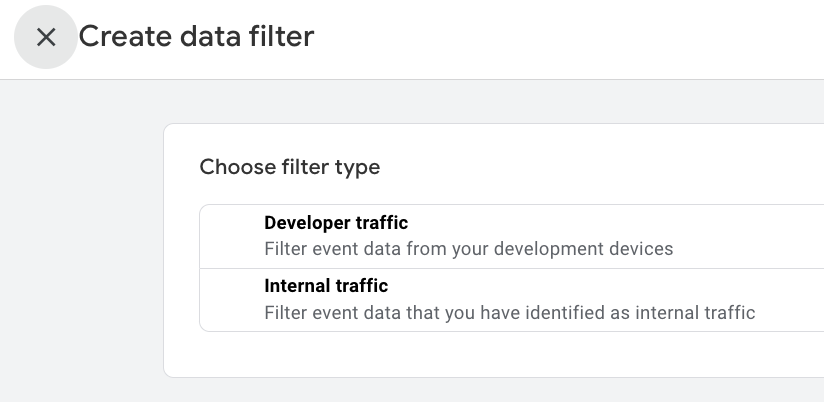
To apply the Internal Traffic filter, you must first define it in Tag Settings, as shown below. Leave the traffic_type value as internal and add your IP. Then, go to the Data Filters once more and activate the Internal Traffic filter.
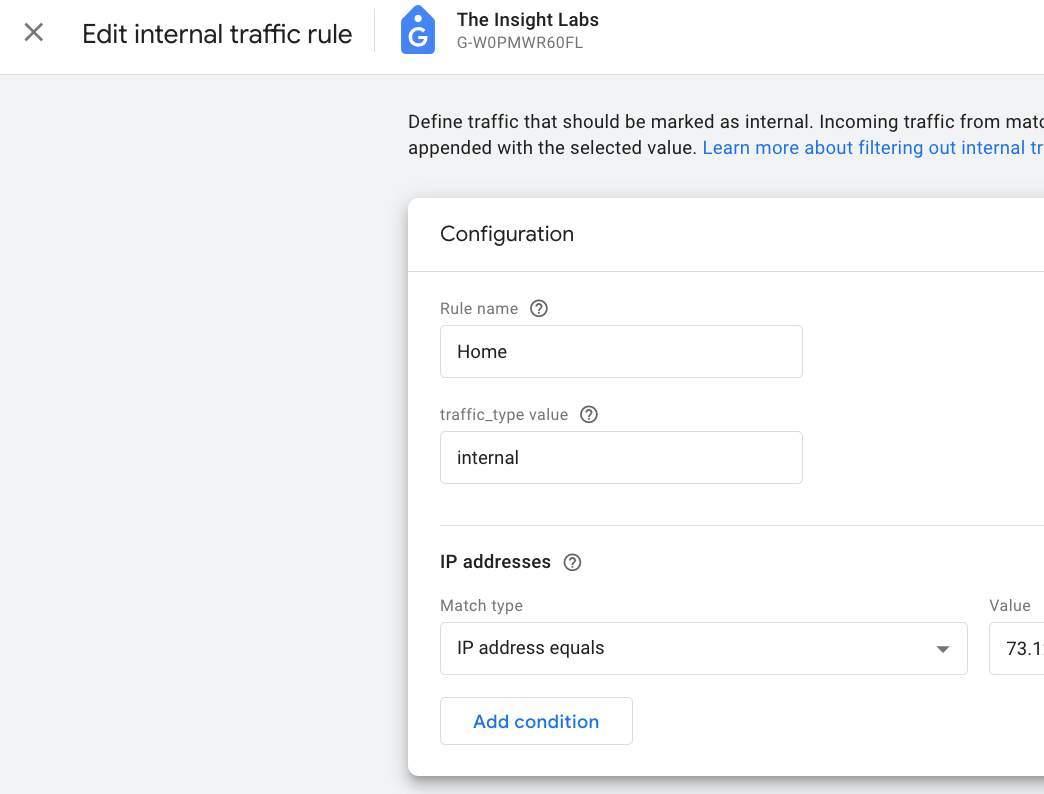
Data Display
- Events: You can see all your events under Admin -> Data Display -> Events. You can modify existing ones, create new ones, or mark important events as conversions (equivalent to Universal Analytics Goals) here.
- Conversions: Here, you can find all your conversion events. An essential distinction between Universal Analytics and GA4 is the "goal counting method." UA used to count the goals once in a session. Yet, GA4 suggests counting conversions per event basis. Therefore, we should always see unique users and conversion completion times together while analyzing the conversion data. Let's say the goal is Lead Form Submission, and we had 60 conversions this week, but you might be surprised once you dig into the data and see 25 of them from a single visitor. Two things can cause such an issue: the individual can submit this many forms, or you might have a problem with the implementation. Therefore, the tag might have been getting triggered repeatedly.
- Audiences: You can find all audiences in this section. By default, GA4 creates two audiences: All Users and Purchasers (whether you are an ecom brand or not). Audiences deserve their content. Shortly, not all visitors are the same. They come with different purposes and do different things; some complete the funnel on the same day, and some never return after taking the first two desired steps. Here, you can create audiences by certain actions they took or didn't take, analyze them separately, or send the Audience to Google Ads for targeted remarketing.
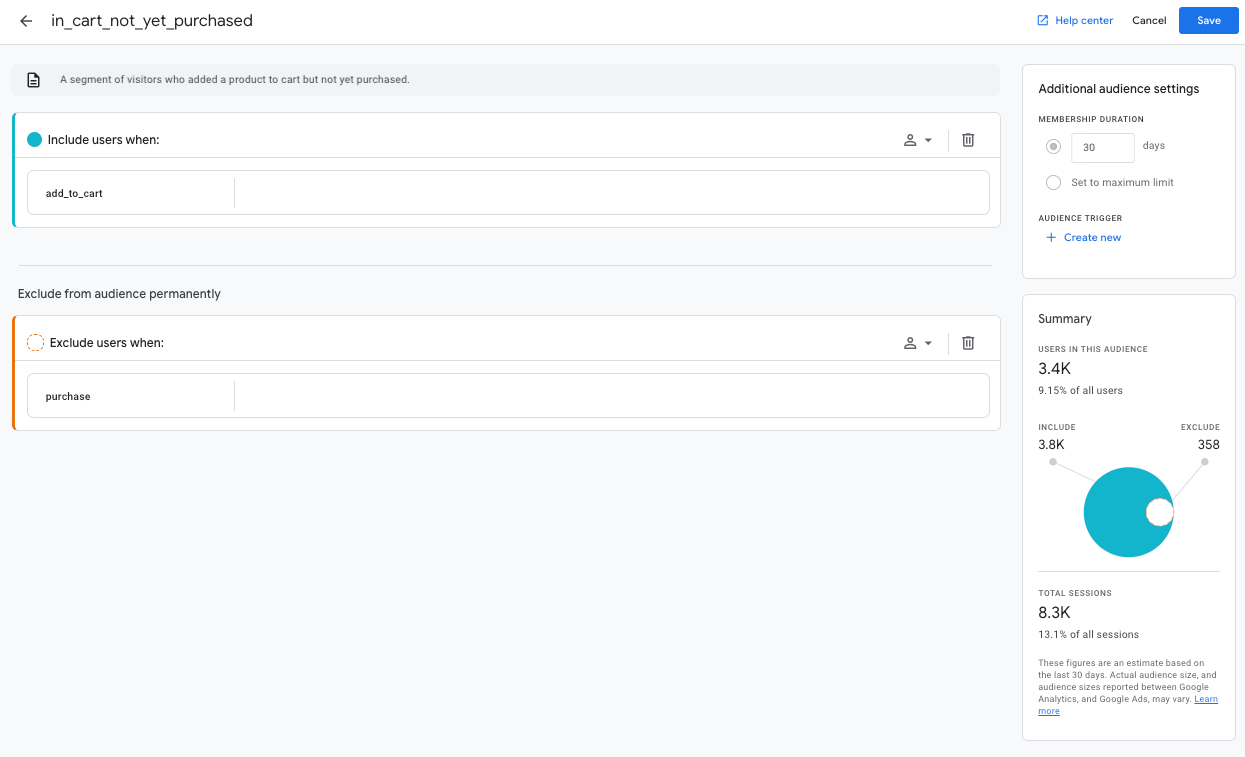
- Custom Definitions: You must use custom dimensions to add more context while implementing custom events. You need to register these custom dimensions to see them in your reports. This is where you can register these dimensions. Example dimensions could be; quiz_question, quiz_answer, call_id, company_name, etc.
- Channel Groups: Another topic needs to be explained in detail. GA4 is doing a great job here. Again, up until some time ago, creating Custom Channel Groups was not possible, but it has also been added along the way. By default, GA4 offers 18 Channels, and they have a nice and somewhat long definition of how traffic is being assigned to these channels. If the Default Definition is not enough to classify your traffic, then you can add a Custom Channel Grouping. For example, if you do a lot of influencer marketing and have solid UTM strategies you follow, then you can create an Influencer channel like the one below;
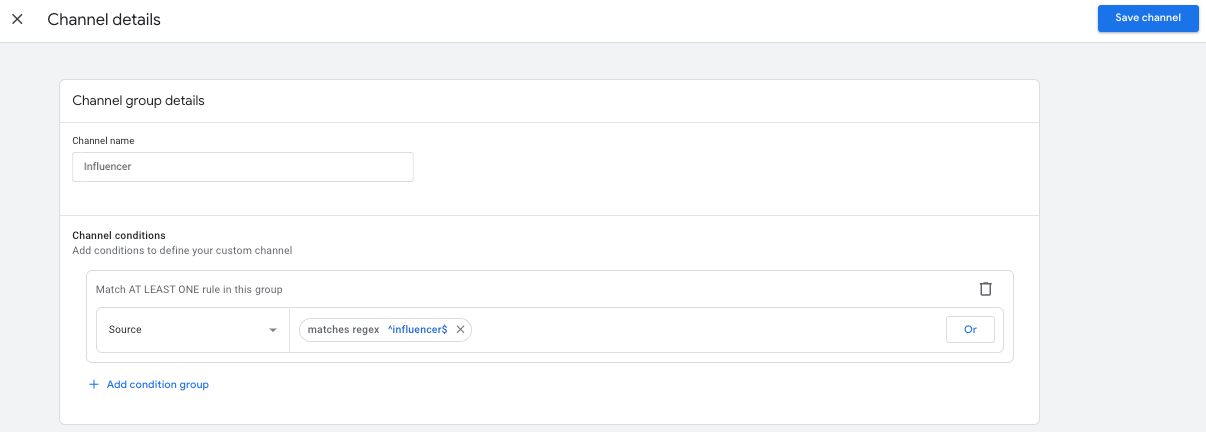
- Attribution Settings: There used to be many Reporting Attribution Models; lately, Google has decided to remove most of them and has left Data-driven and Last Click attribution models only.
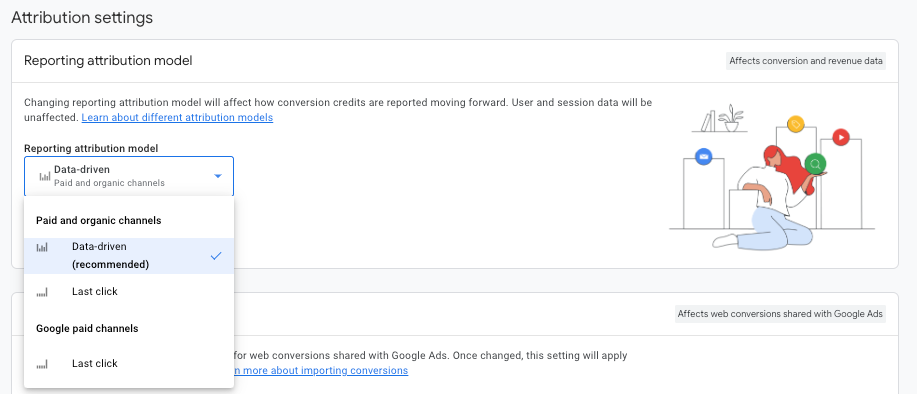
Product Links
You can link many Google products to your GA4 account. I will cover the following three.
- Google Ads: Linking GA4 to Google Ads will allow you to use GA4 conversions in Google Ads to bid against. You can also pass your Audiences to Google Ads. *The audience size must be greater than or equal to 1000. Here is Google's documentation.
- Search Console: You can analyze organic search results by linking your Search Console account to GA4. You can see what keywords you are getting ranked for, which queries get clicks, and more.
- BigQuery: BigQuery is a data warehouse and a Google Cloud Platform product where you can store and manipulate not only GA4 but all sorts of data. Connecting your GA4 account to BigQuery lets you own your data, meaning that you can store raw GA4 data for as long as you need. Previously, we covered that GA4 maintains data retention for at most 14 months. After that, you can't perform custom reports; you can only perform aggregated reports. Bigquery can provide raw, unsampled data without a data retention period, and then you can use them in various settings, like dashboard building and more.
Need help on GA4?
Whether you need help with data clarity, auditing your existing GA4 implementation, planning a new one, analyzing your data, or creating dashboards to quickly observe how your website performs, let's book a time with me to see if we can work together!